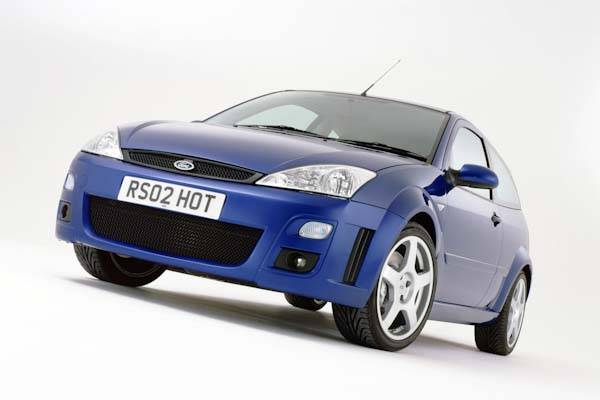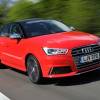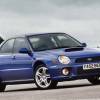
RAC sale – up to 33% off*
• Roadside cover from £5.29 a month†
• We get to most breakdowns in 60 mins or less
• Our patrols fix 4/5 breakdowns on the spot

BY ANDY ENRIGHT
Introduction
Get a bunch of petrolheads together and sooner or later the game of identifying future classics will emerge. Some choices will be met with slack-jawed stupefaction while other will generate howls of derision. One car that tends to get universal nods of agreement is Ford's RS Focus, a hot hatch with serious pedigree, the requisite rarity and enough controversy about it to make it an interesting curio in years to come. In the meantime at least, if you can find one, do us a favour and fling it down a back lane or take it to a track day. Just don't punt it into the scenery. Ford didn't make a whole lot of them.
Models
Models Covered:
3dr hatch: 2.0T petrol [RS])
History
The genesis of the Focus RS was long and troubled. Ford had been promising a hot Focus for years and the ST170 model in the mainstream range was an unexpected dud. Most expected a turbocharged RS Cosworth variant to appear with four-wheel drive and enough performance to carry on the mantle of the legendary RS Sierra and Escort Cosworth models. That model never materialised and Fast Ford fans had to content themselves with something a little more modest. Or so they thought.
Despite 'only' being front wheel drive and packing 215bhp, the Focus RS was as sharp as a surgeon's scalpel, making the old Escort seem the bluntest of implements. Some loved it, others hated it with a passion but the Focus RS could never be accused of being anodyne. Original plans to sell this 215bhp car at around £24,000 had to be ditched when first Honda (with the Civic Type-R) then SEAT (with the Leon Cupra R) both brought 200bhp rivals to market for £17,000 or less. It arrived in dealers in September 2002 and was a big hit with buyers. Ford manufactured 4,501 RS models for Europe and 2,147 were right hand drive variants that found their way here. A decent proportion of those have been crashed, thrashed and trashed, making the RS about as exclusive as modern day production Fords get. Production ended in late 2003.
What You Get
The kit that's fitted on the Focus RS is the kind of stuff that makes you feel like a rally driver - something that's quite intentional. Ford has teamed up with renowned motorsport suppliers like Sparco, OZ Racing and Brembo to produce seats, wheels and brakes that are the real deal. If you plan to use your car for track days, you should see the benefit of this approach quite quickly. This Focus will go on and on, lap after lap, long after rivals have retired smoking to the pits.
Outside, there are 18-inch OZ Racing alloy wheels, a purposeful aerodynamic front air dam, a rear spoiler and chassis settings borrowed from Ford's World Rally programme. Equipment levels run to an in-dash 6-CD autochanger, air conditioning, ABS, twin airbags, a Safeguard immobiliser and a Category 1 Thatcham alarm system. Inside, there's an interior of carbon fibre, leather, aluminium and alcantara. You've a starter button to instigate things and even a gear change light: from the ground up, this car is intended to be the closest you can get to Focus World Rally car.
Unlike the Focus ST170, this feels like a bespoke performance car. The bonnet, doors, roof panel and lights remain standard, but every other exterior element is unique, reflecting many of the styling cues from the Focus World Rally Car project, with aerodynamic information being passed between the two cars. In fact, the Focus World Rally Car featured a front spoiler design based on that fitted to the Focus RS.
What You Pay
Please fill in the form here for an exact up-to-date information.
What to Look For
The big no-no when it comes to the focus RS is after market modifications. If the car has been majorly modded or (horror of horrors) resprayed a different colour, then just walk away. The other biggie is crash damage. Lift the carpets and check for chassis ripples, search for overspray and make sure the alloys aren't scuffed to oblivion.
Avoid cars that fire white smoke from the exhaust when under boost as this can mean the turbo's on the fritz. Early cars were plagued by sagging Sparco seats and rather soft paintwork. Water pumps aren't the most durable and the bonnet panel has been known to come away from its support spars.
Replacement Parts
(approx based on an '03 Focus RS) As you might expect, parts that are Focus generic are dirt cheap and those that are RS specific are a good deal pricier. Expect to pay £198 if you roger a front alloy wheel while front pads are £150 a pair and rears £50. A minor service is around £180 with a major one about £275. Too many traffic light grands prix will soon see you queuing for a £420 clutch kit.
On the Road
Initial reports claimed that this car was scheduled to develop 230bhp - and it probably was until a large number of overheated development engines put paid to the idea. As it is, 215bhp is quite enough to be putting through the front wheels. Though the Focus chassis is still one of the best hatchback foundations around, it's hard to imagine it deploying much more than this effectively. The Focus RS harnesses this power through a Quaife torque-biasing differential and it's this unit that has generated much of the controversy about the car. When it comes to torque steer, the Focus RS is a champion and you'll need a firm grip on the wheel when accelerating hard if you're not to switch lanes inadvertently. Some could get on with this characteristic while other testers hated it.
There's no disputing the fact that the RS is properly quick though. It'll get to 60mph in 6.4 seconds and to 100mph from rest in 15.5 en route to a top speed of 144mph. What's even more impressive than the straight line speed is the way the car can dispatch a series of corners. Power goes to those big 18 inch tyres mounted on OZ Racing alloy wheels. Redesigned front suspension helps, with a wider track, Sachs Racing dampers and a beefy front anti-roll bar. At the back, the Focus RS retains the Control Blade multi-link set up, but stiffness has been increased for greater durability. Make no mistake, this is one car designed to be driven hard. With an all-up weight of 1,175kg, the Focus boasts a power to weight ratio of almost 200bhp per tonne, thus trumping the Subaru Impreza WRX that it went head to head with.
The oily bits underpinning the Focus RS are relatively fundamental: a water-air intercooler, forged pistons and conrods and remapped engine management unit are the technical highlights whilst the 2.0-litre four cylinder Zetec unit with a single turbocharger promises old-school big-boost action. Intentionally, you get more of an intoxicating turbo rush than rivals can offer and, while many will feel this was a retrograde step, Ford wanted to bring back the excitement, the rawness and the pure joie de vivre that has always marked out a classic RS model. They succeeded.
Overall
It may not be remembered as the greatest hot hatch of its time, but the Focus RS was probably the most exciting. Rare, charismatic and never less than a huge adrenaline rush, this is a car that will appeal to a select band of enthusiasts. The market still has a little way to go before it bottoms, but this is a stone cold, bolted on future classic. That much is not up for discussion.







